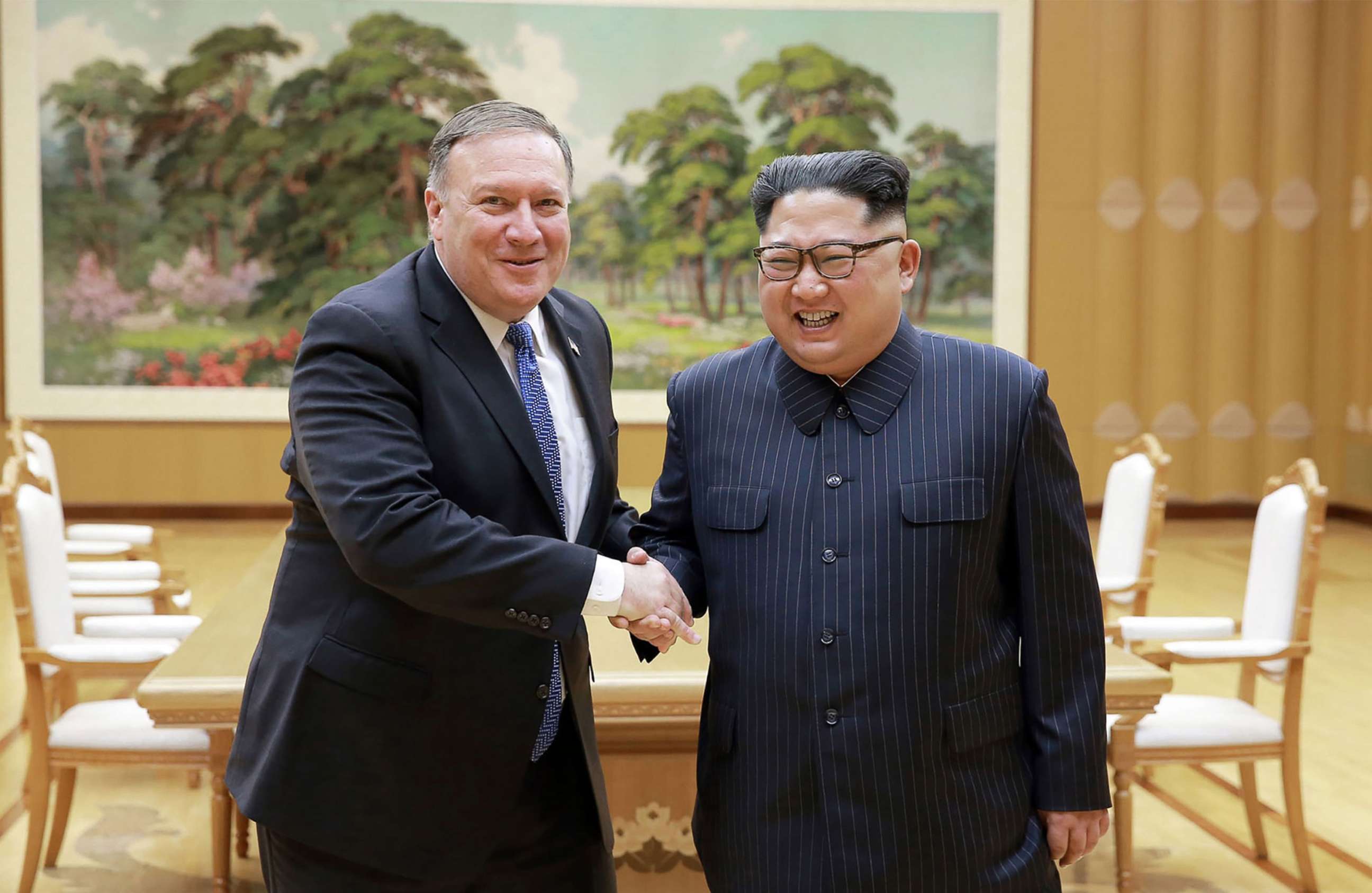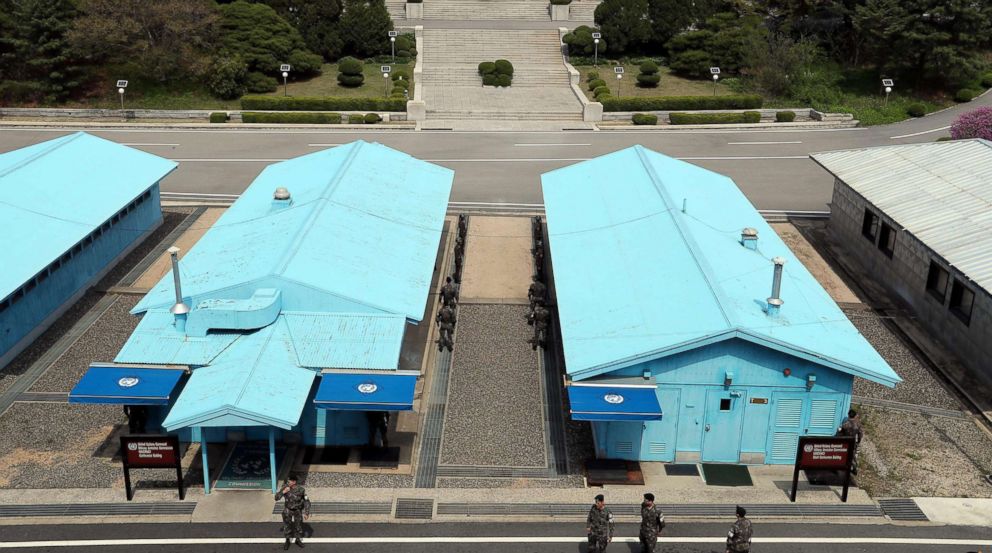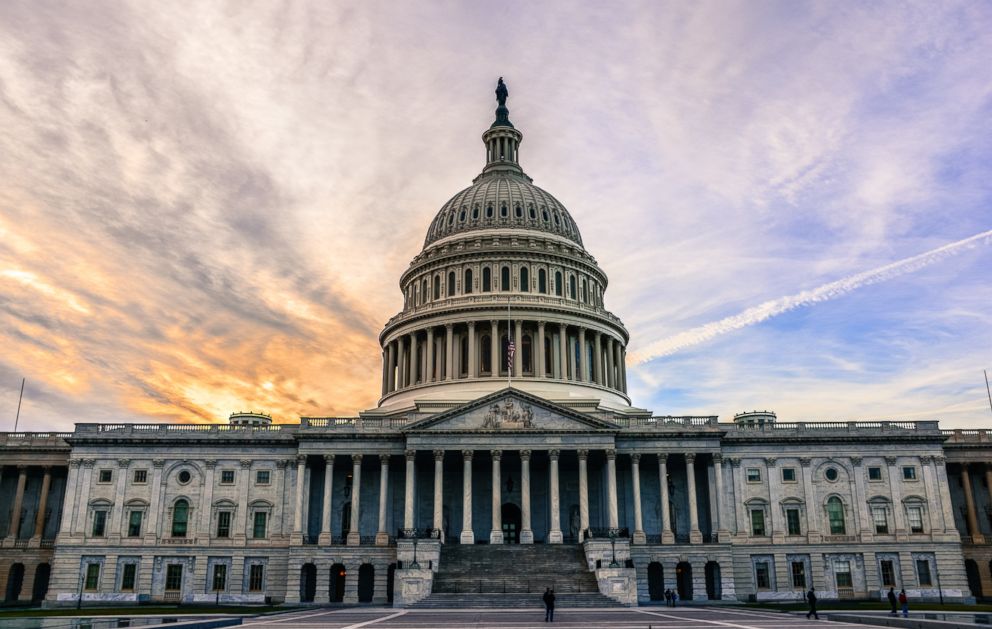Pompeo says US wants a treaty with North Korea: What one might look like
The U.S. wants a Senate-approved treaty with North Korea, unlike the Iran deal.
Last year, President Trump threatened North Korea with “fire and fury like the world has never seen,” and mocked Kim Jong Un as “Little Rocket Man.”
Kim Jong Un hit back at Trump with rhetorical retaliation of his own, calling Trump a “mentally deranged U.S. dotard.”
Now, the two are heading toward a history-making summit, and a landmark treaty could very well be on the table.
What might a treaty with North Korea look like?
When it comes to North Korea, the United States and South Korea both want denuclearization –- they want North Korea to give up its nuclear weapons completely.
“I can tell you what it is that President Trump has instructed me to do with respect to how we are going to proceed against North Korea,” Secretary of State Mike Pompeo told a House Foreign Affairs Committee hearing.
“We are not going to do trade for trade. We are not going to let this drag out. We are not going to provide economic relief until some time as we have an irreversible set of actions – not words, not commitments -– undertaken by the North Korean regime," Pompeo said.
North Korea has stated it would be willing to give up its nuclear weapons, but only if the U.S. withdraws the 28,500 American troops stationed in South Korea.
Pompeo testified that he hopes any deal brokered during the Singapore summit is sent to Congress to be ratified as a treaty, which is a formal and written agreement between sovereign states and/or international organizations.

In the United States, treaties are negotiated by the executive branch. Once negotiators have accepted the terms of the treaty, the president sends the treaty to the Senate for its “advice and consent” on a resolution of "ratification" -– or endorsement (see more below).
In an interview with FOX News on Tuesday, Sen. Jim Risch, a Republican who sits on the Senate Foreign Relations Committee, said Trump, Vice President Mike Pence and Pompeo have all committed that they’re “going to do their very best” to put any deal reached with the North Koreans in the form of a treaty.
"That’s good for us and it’s good for North Korea, because North Korea can then count on the fact that it isn’t one of these executive agreements that another president can walk back,” Risch said. “It will be, in fact, a treaty. And they are all committed to do their very best to get it in a form where it can be voted on as a treaty.”
But skeptics warn that any treaty with the North could have serious repercussions.
“Going down the peace treaty path without being fully aware of its consequences can be dangerous,” Bruce Klingner, a senior research fellow at the Heritage Foundation, said in an interview with ABC News.
North Korea poses a threat to the South because of its extensive conventional, mechanized, armor and artillery forces deployed near the demilitarized zone, Klingner said. By agreeing to a treaty, it would end the legal justification for the United Nations Command, which is the multinational military force that supports South Korea.

It could also create momentum in both South Korea and the U.S. for “the war is finally over, bring the boys home,” he said.
"The U.S. and South Korea should not sign a peace treaty until the North Korean nuclear threat is eliminated and the conventional threat reduced,” he said, adding that North Korean forces should be “capped and weaned away” from the forward area.
“Reducing the potential for either side to conduct a sudden-start invasion while increasing transparency on military forces can reduce tensions as well as the potential for miscalculation leading to a military clash,” Klingner said.
“A peace treaty would have significant security repercussions for the United States and its allies, so [it] should be submitted to Congress for ratification,” he said.
What is the Senate’s role in ratifying treaties?
The executive branch negotiates treaties, but they must be approved by a two-thirds Senate majority before they can be ratified.
The Constitution’s framers gave the Senate a share of the treaty power to give the president the benefit of the Senate’s advice and counsel, and to check presidential power, according to the Senate’s Historical Office.
Here’s how that process works:
When the president submits a treaty to the Senate, the treaty and any supporting materials are first referred to the Foreign Relations Committee.
The Foreign Relations Committee will have to report the treaty favorably, unfavorably, or without a recommendation.
If the committee votes to report a treaty favorably, it heads to the Senate floor for consideration.

If the committee declines to act on the treaty, it’s not automatically returned to the president. Treaties, unlike bills and other legislative measures, remain available to the Senate from one Congress to the next until they are disposed or the Senate agrees to return them to the president.
Once the treaty is on the Senate floor, the Senate can amend it.
The Senate can reject treaties, too.
In 1919 and 1920, the Senate refused to approve the Treaty of Versailles as negotiated by President Woodrow Wilson over concerns that it would bind the U.S. to decisions made by the League of Nations and could supersede Congress’s power to declare war.
Once the amending process is complete and debate has ended, the Senate does not vote on approving the treaty. Instead, the Senate takes up a resolution of ratification –- meaning the Senate is formally giving its advice and consent and empowering the president to proceed with ratification of the treaty.
Under Article II, Section 2 of the Constitution, the final vote on agreeing to the resolution of ratification requires a vote of two-thirds of the Senate.
The Senate last voted to endorse a treaty in March, in support of Montenegro’s accession to the North Atlantic Treaty Organization.
The last time the Senate rejected a treaty was in 2012, when a United Nations treaty to ban discrimination against people with disabilities was defeated in the Senate in a 61-38 vote after a bloc of conservatives believed the treaty would relinquish U.S. sovereignty to a U.N. committee, and intervene with U.S. law.
Was the Iran Deal a treaty?
The Joint Comprehensive Plan of Action (JCPOA) with Iran, colloquially referred to as the Iran deal, was not a treaty and was never ratified by the Senate, which made it vulnerable to the next administration.
Under the deal, Iran promised it would cut back its nuclear program, including dismantling two-thirds of its key nuclear machinery for the next 10 years, reducing its uranium stockpile by 98 percent for the next 15 years, and submitting to international monitoring and inspections.
Many senators in Congress, outraged that the Senate’s constitutional role as a watchdog was bypassed, fought for the passage of the Iran Nuclear Agreement Review Act of 2015, which required the administration to re-certify the deal every 90 days by making sure Iran was compliant with the terms of the agreement.
In 2016, then-presidential candidate Donald Trump claimed his “No.1” priority as president would be to “dismantle the disastrous deal with Iran.”
Earlier this month, Trump fulfilled his campaign promise and announced the U.S. would withdraw from the Iran deal.
“The Iran deal is defective at its core,” Trump announced just minutes before he signed a presidential memorandum to begin reinstating U.S. nuclear sanctions on the Iran regime.
“We will be instituting the highest level of economic sanction. Any nation that helps Iran in its quest for nuclear weapons could also be strongly sanctioned by the United States,” Trump said.




